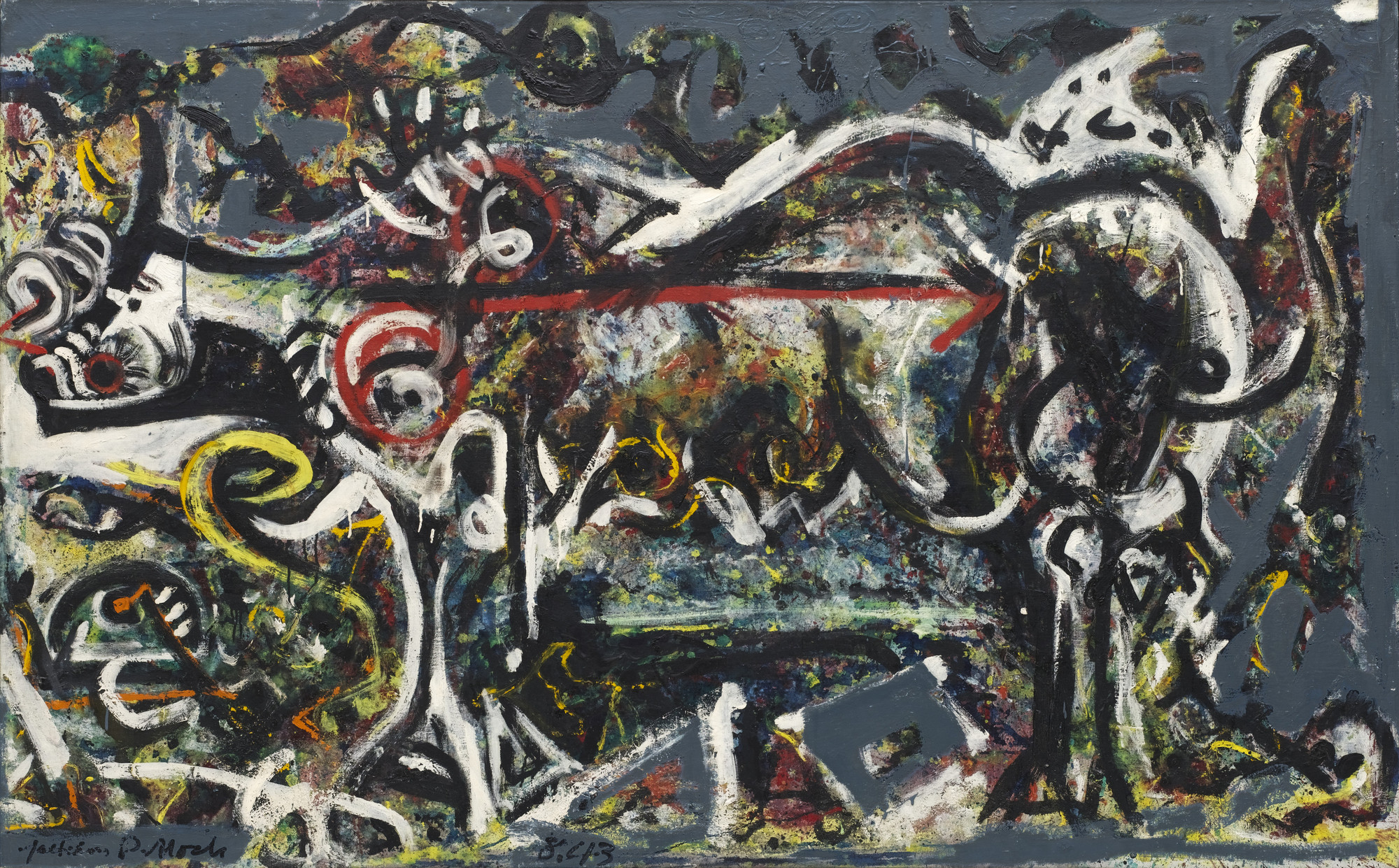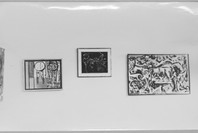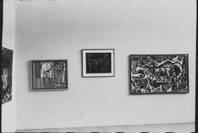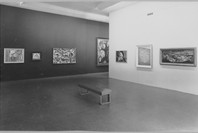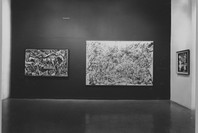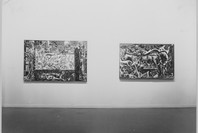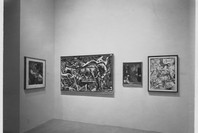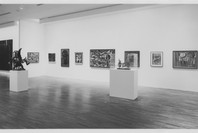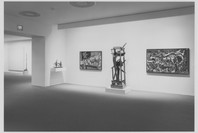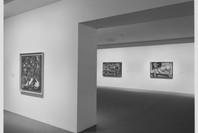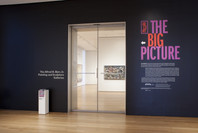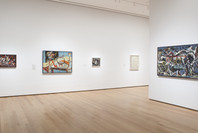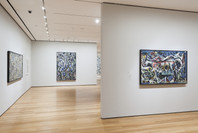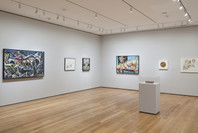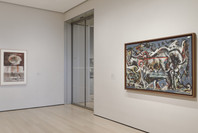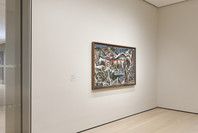In the early 1940s Pollock, like many of his peers, explored primeval or mythological themes in his work. The wolf in this painting may allude to the animal that suckled the twin founders of Rome, Romulus and Remus, in the myth of the city’s birth. But “She-Wolf came into existence because I had to paint it,” Pollock said in 1944. In an attitude typical of his generation, he added, “Any attempt on my part to say something about it, to attempt explanation of the inexplicable, could only destroy it.” The She-Wolf was featured in Pollock’s first solo exhibition, at Art of This Century gallery in New York in 1943. MoMA acquired the painting the following year, making it the first work by Pollock to enter a museum collection.
Gallery label from Abstract Expressionist New York, October 3, 2010-April 25, 2011.
The wolf in this painting may allude to the animal that suckled Romulus and Remus, the twin founders of Rome, in the myth of that city's birth. Although Pollock refused to specifically identify his subject as such, it is nevertheless a powerful example of the archetypal symbolism that he explored during his early years. He began by covering the canvas with a layer of multicolored splatters, washes, and drips, and then superimposed the black outline of the wolf, whose head faces left. Finally, he added thick, slashing white lines to highlight her shape, and dense patches of gray-blue at the edges to bring it into further relief. The She-Wolf was featured in Pollock's first solo exhibition, at Peggy Guggenheim's Art of This Century gallery in New York, in 1943. MoMA acquired the painting the following year, making it the first work by Pollock to enter a museum collection.
Gallery label from Jackson Pollock: A Collection Survey, 1934-1954, November 22, 2015–May 1, 2016.
When Pollock painted The She-Wolf he had not yet arrived at his so-called "drip" style, one of the great inventions of Abstract Expressionism. The canvas's traces of multicolored washes and spatters show that a free-form abstraction and an unfettered play of materials were already parts of his process; but in this work and others his focus is a compound of mythology and an iconography of the unconscious. (He was influenced here both by Surrealism and his own Jungian analysis.) Perhaps Pollock's she-wolf is the legendary foster-mother to Romulus and Remus, the founders of ancient Rome. But he himself refused to identify her, saying, "She-Wolf came into existence because I had to paint it. Any attempt on my part to say something about it, to attempt explanation of the inexplicable, could only destroy it."
Drawn in heavy black and white lines, the wolf advances leftward. Her body is overlaid with abstract lines and patches, a thick, unreadable calligraphy that spreads throughout the canvas. These hieroglyphic intimations, along with the somber palette and the conjuring of myth, reflect the climate of a period shadowed by war. Intended to approach ultimate human mysteries, they were to be simultaneously meaningful and unknowable.
Publication excerpt from The Museum of Modern Art, MoMA Highlights, New York: The Museum of Modern Art, revised 2004, originally published 1999.
